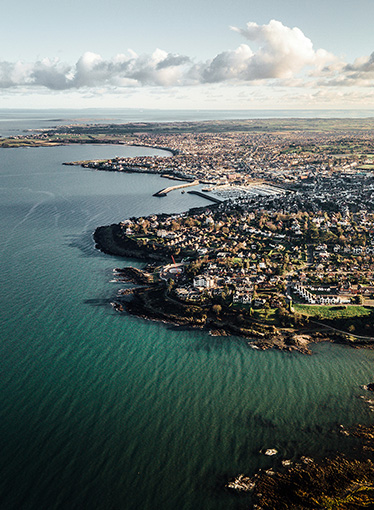Evacuations from High-Risk Locations Call +44 (0)1202 308810 or Contact Us →

The Security Implications of the Northern Ireland Summer Marching Season
11 Jul 2017
The 2017 summer marching season has begun in Northern Ireland. The most important marches occur on or around 12 July, to commemorate the Battle of the Boyne in 1690. The battle was fought between forces loyal to the Protestant William of Orange and Mary Stuart and those who sided with the deposed Catholic monarch James II; the battle has been seen as a turning point in James’s attempts to regain the crown. The 12 July Orangemen marches are very important to the Protestant and Loyalist sections of Northern Ireland, while generally causing disdain in the Catholic and Nationalist community, as they march near or through Catholic majority areas. There are also related events on 11 July, including large bonfires.
Key Points
- The highly contentious 2017 summer marching season in Northern Ireland has begun.
- The most symbolic marches occur on 12 July, to commemorate the Battle of the Boyne in 1690.
- These marches occur amidst a period of political uncertainty in the region.
Situational Summary
Civil Unrest: The 2017 summer marching season has begun in Northern Ireland. The most important marches occur on or around 12 July, to commemorate the Battle of the Boyne in 1690. The battle was fought between forces loyal to the Protestant William of Orange and Mary Stuart and those who sided with the deposed Catholic monarch James II; the battle has been seen as a turning point in James’s attempts to regain the crown. The 12 July Orangemen marches are very important to the Protestant and Loyalist sections of Northern Ireland, while generally causing disdain in the Catholic and Nationalist community, as they march near or through Catholic majority areas. There are also related events on 11 July, including large bonfires.
Solace Global Comment
The summer marching season has always proved one of the most difficult sticking points in the Northern Ireland Peace Process and continues to cause divisions in the region’s society. This year’s set of marches are of importance given the political deadlock which has beset Northern Ireland in 2017. Despite passing the official deadline, an executive for the Northern Ireland Assembly has yet to be formed due to differences between the Loyalist DUP (Democratic Unionist Party) and the Republican Sinn Fein, after snap elections in April 2017. The elections were called after a mismanagement scandal involving the former First Minister and current DUP leader, Arlene Foster, and a renewable energy scheme. These Assembly elections saw the greatest number of votes for Nationalist/Republican parties ever, with Unionist/Loyalist parties taking a significant hit.
The situation has been further complicated by the deal done between the Conservative Party and the DUP after the UK’s 2017 election, when no party gained a majority. Many DUP members want the party’s leadership to use its newly found influence in Westminster, to persuade the government to allow marching routes through flashpoint areas, most importantly Garvaghy Road in County Tyrone. While a march through this area has not been permitted, that it has been strongly lobbied for may increase risk of violent incidences. In the region as a whole, the potential for clashes between the Loyalists, Nationalists, and the police is higher than in the recent past, due to this year’s political developments.
The 12 July marches are due to be the most well attended, with an estimated 500,000 people either marching or spectating. Armagh is due to hold the largest march, while Belfast will hold the longest; other marches are due to occur across the region, as the map above shows. The marches differ in size from dozens up to thousands.
The 2016 set of 12 July parades passed without much incident. There were a few occurrences of violence in counter marches in Nationalist communities, including in North Antrim, but levels of unrest were low. This included Crumlin Road, Belfast, where violence has been common in the past. In 2015, 24 police officers were injured when clashes ensued after they refused marchers entry to a nationalist stretch of Crumlin Road. A 16-year-old girl was also injured after a car struck Nationalist protestors. In years past, marches have had deadly consequences. In 1998, for example, three boys were killed when Loyalist marchers firebombed their home in Ballymoney; their mother was Catholic but lived in a mainly Protestant area.
SECURITY ADVICE
Civil UnrestLowDue to the highly personal and sensitive nature of marches in Northern Ireland, clashes between marchers and counter-demonstrators are possible. As noted, the political instability this year raises the possibility for such clashes to occur. However, it should be noted that tensions regarding the march season have eased somewhat over the past five to ten years, decreasing the likelihood of sectarian violence. Travellers are reminded to remain vigilant and employ sensible personal security precautions. It is also important to adhere to the instructions of police and local authorities in case hostility boils over into violence.
Travellers should also note that on the night of 11 July, huge bonfires are erected by members of the Loyalist community. These bonfires can be associated with anti-social behaviour and symbols of Irish Nationalism, such as the Irish Tricolour, are often burned. While travellers should not be concerned if they see large fires, the bonfires should be avoided due to the potential for clashes in their vicinity and general criminality.
Solace Global would not advise clients on the need to employ enhanced security precautions when visiting Northern Ireland. Travellers may wish to use travel tracking technology with an intelligence feed, to stay abreast of any security-related events which may occur. More information on the times and locations of marches can be found on the Parades Commission website at https://www.paradescommission.org/.